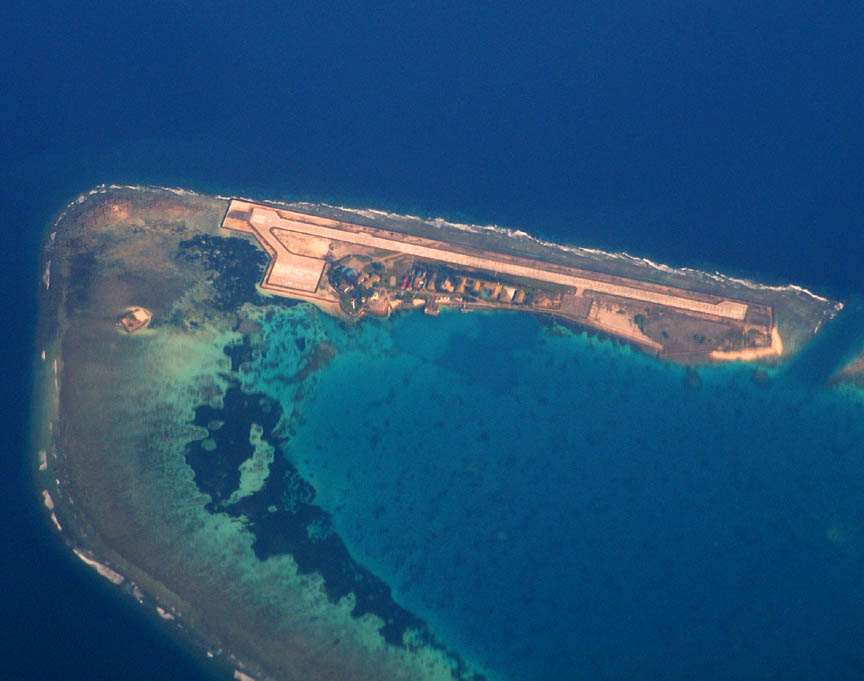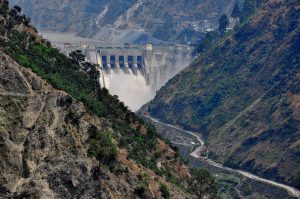This week’s ruling by the Permanent Tribunal of Arbitration in the Netherlands strongly condemns China for the serious and permanent environmental damage it has inflicted to coral reefs and and their wildlife in the South China Sea.
The case was brought by the Philippines which is infuriated at China’s ‘occupation’ of islands and waters that fall within its exclusive territorial zone, and the severe damage it has caused to coral reefs and other natural resources.
Since 1998 the Philippines has documented around 100 incidents in which it has found Chinese fishermen at its Spratly Islands and surrounding waters equipped with cyanide to poison fish (and all other animal life) together with dynamite, detonating cord and detonating caps.
The Chinese fisherman have additionally removed a wide range of sea life, including endangered sea turtles, giant clams, giant oysters, sharks, eels, and large pieces of highly ornamental coral. On one occasion 28 Chinese fishing boats were simultaneously trawling the coral reefs.
China has also engaged in the construction of artificial islands on coral reefs, intended to secure its territorial claim, some of them measuring several square kilometres in size, the total amounting to almost 13 square kilometres.
These are constructed using huge dredgers that cut away at coral, rock and seabed, and pile the material up onto the islands. The largest such machines can transport 4,500 cubic metres of material per hour. The effect is to destroy entire coral atolls, consolidating all their hard material into platforms elevated above high tide level.
In the majority of cases the Chinese fishers were protected by Chinese patrol vessels, and since 2012 the Philippines has ceased to attempt entry to the disputed areas to gather further evidence due to the Chinese military presence. Chinese military ships have also excluded Filipino fishers from their own waters.
Severe environmental harm condemned
In today’s verdict the the judges roundly condemned these actions, decrying the effect of China’s actions on the marine environment, including its “recent large-scale land reclamation and construction of artificial islands at seven features in the Spratly Islands”.
Assisted by three independent experts on coral reef biology and the Philippines’ own expert reports, the Tribunal’s damning conclusion is that “China had caused severe harm to the coral reef environment and violated its obligation to preserve and protect fragile ecosystems and the habitat of depleted, threatened, or endangered species.”
In addition, “Chinese fishermen have engaged in the harvesting of endangered sea turtles, coral, and giant clams on a substantial scale in the South China Sea, using methods that inflict severe damage on the coral reef environment. The Tribunal found that Chinese authorities were aware of these activities and failed to fulfil their due diligence obligations under the Convention to stop them.”
As such China “had violated its obligation under Articles 192 and 194 of the United Nations Convention on the Law of the Sea to preserve and protect the marine environment with respect to fragile ecosystems and the habitat of depleted, threatened, or endangered species.”
China has, in effect, laid claim to almost the entire South China Sea as its national territory, including areas considered as ‘High Seas’ and waters and islands that lie within the exclusive economic zone of other nations such as the Philippines. Its claim is founded on the argument that Chinese fishers have made use of these waters for hundreds of years.
While agreeing that China had acquired historical rights to fish in some of the disputed waters, the Tribunal was clear that these rights were non-exclusive and did not exempt China from its legal obligations under the Convention.
Legal obligations on the environment
Under Article 192 of UNCLOS “States have the obligation to protect and preserve the marine environment.”
Under UNCLOS Article 194, “States shall take, individually or jointly as appropriate, all measures consistent with this Convention that are necessary to prevent, reduce and control pollution of the marine environment from any source, using for this purpose the best practicable means at their disposal and in accordance with their capabilities, and they shall endeavour to harmonize their policies in this connection.”
In addition Article 194 states that “measures taken in accordance with this Part shall include those necessary to protect and preserve rare or fragile ecosystems as well as the habitat of depleted, threatened or endangered species and other forms of marine life.”
Obligations on states bordering an enclosed or semi-enclosed sea – such as the South China Sea – are created by Article 123, to “cooperate with each other in the exercise of their rights and in the performance of their duties under this Convention”, for example to”coordinate the management, conservation, exploration and exploitation of the living resources of the sea”, and to “coordinate the implementation of their rights and duties with respect to the protection and preservation of the marine environment”.
Article 206 also imposes reporting and monitoring requirements on signatory states, to which China has not adhered: “When States have reasonable grounds for believing that planned activities under their jurisdiction or control may cause substantial pollution of or significant and harmful changes to the marine environment, they shall, as far as practicable, assess the potential effects of such activities on the marine environment and shall communicate reports of the results of such assessments … ”
One of the world’s last great coral seas despoiled
The tragedy is that the South China Sea “includes highly productive fisheries and extensive coral reef ecosystems, which are among the most biodiverse in the world.” The marine environment around Scarborough Shoal and the Spratly Islands, in particular, “has an extremely high level of biodiversity of species, including fishes, corals, echinoderms, mangroves, seagrasses, giant clams, and marine turtles, some of which are recognised as vulnerable or endangered.”
As well as using cyanide, dynamite and trawling to extract the marine wealth from the coral reefs, Chinese vessels have also resorted to less conventional techniques. These include towing anchors across the reefs, in effect ‘ploughing’ them and reducing them to rubble in order to dislodge large coral pieces and giant clams.
Specially adapted marine vessels have also been driven directly across reefs in order to break up the coral with their propellers. This alone has been responsible for destroying some 70 square kilometres of coral, of around 124 square kilometres of reef destroyed by China. This enables the removal of valuable giant clams and coral pieces, while the rubble can be used for artificial island construction.
In conclusion the Tribunal finds that:
- “China’s land reclamation and construction of artificial islands, installations,and structures at Cuarteron Reef, Fiery Cross Reef, Gaven Reef (North), Johnson Reef, Hughes Reef, Subi Reef, and Mischief Reef has caused severe, irreparable harm to the coral reef ecosystem;
- “China has not cooperated or coordinated with the other States bordering the South China Sea concerning the protection and preservation of the marine environment concerning such activities; and
- “China has failed to communicate an assessment of the potential effects of such activities on the marine environment, within the meaning of Article 206 of the Convention; and
- “China has breached its obligations under Articles 123, 192, 194(1), 194(5), 197, and 206 of the Convention.”
China has publicly rejected both the Tribunal itself and its findings as “a farce”. It remains to be seen if the unusually powerful verdict will do anything to restrain or reverse China’s ongoing, deliberate destruction of what was, until recently, one of the greatest biological treasures of our global ocean.
Oliver Tickell is Contributing Editor at The Ecologist where this article was first published.








